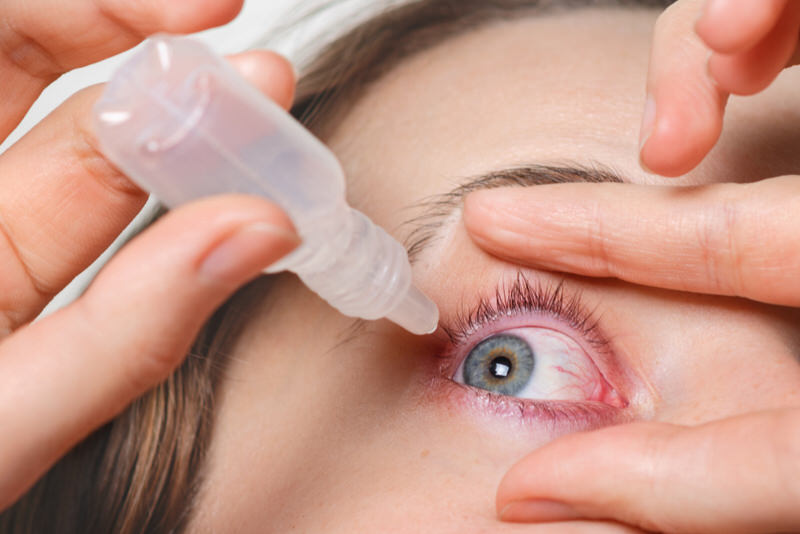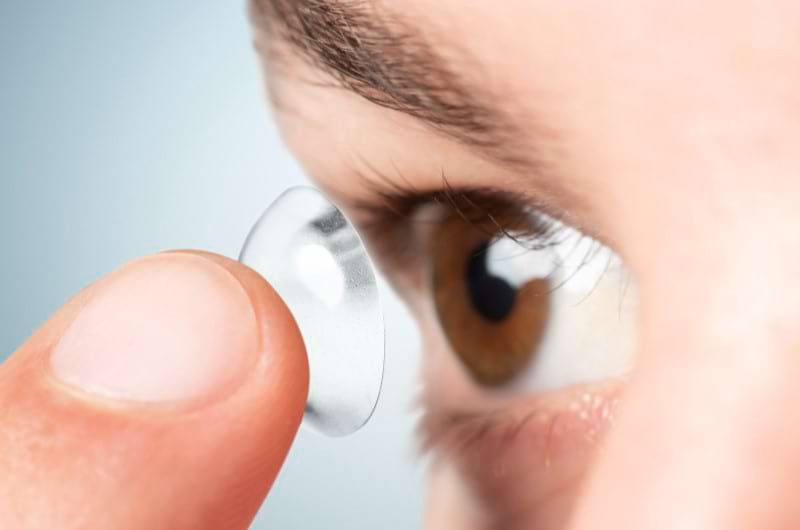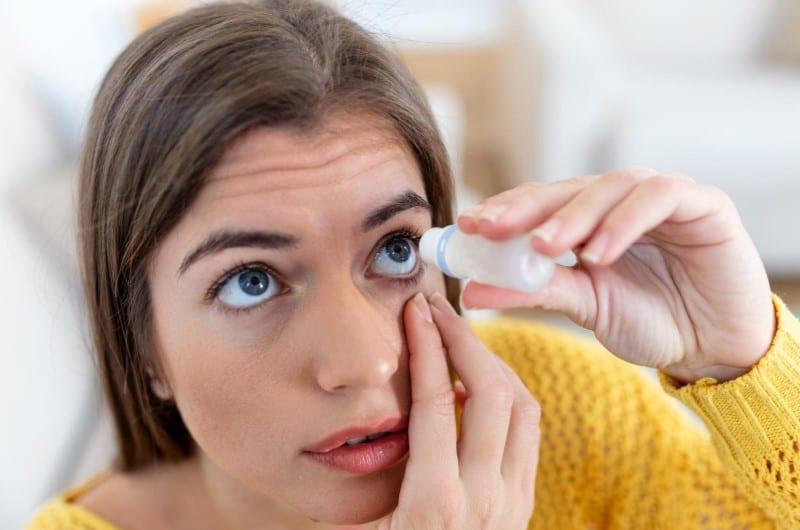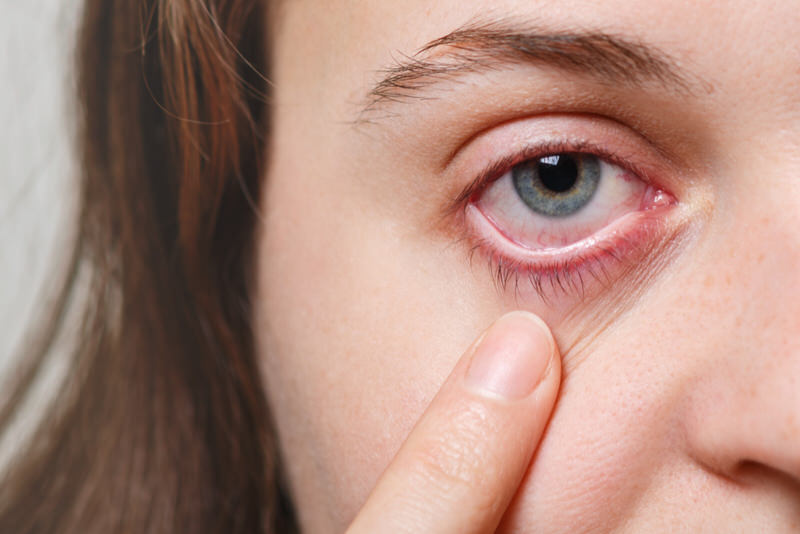An eyelash and even a foreign object like your contact lens could get lost in your eye. Whenever your eye comes in contact with any foreign object, it tries to expel it as quickly as possible, generally by forming tears. But sometimes, your eyelash or contact lens might get lost in the upper eyelid as there is more space there, feeling like it went to the back of your eye. Getting help from another person or visiting your doctor is the best course of action.
Your eyelashes that grow above and below your eyelids are there for a reason.
They are meant to protect your eyes from dust and other harmful particles in the air, serving as a shield.
The glands in your eyes are meant to lubricate your eyes as you keep blinking, ensuring they don’t go dry.
Similar to the hair on your body, your eyelashes also follow a cycle of falling out and regenerating. But it’s also pretty easy for your eyelash to fall into your eyes and cause havoc when it’s there.
While sometimes the eyelash is in the front, and it’s pretty easy to get it out, other times it can go behind your eye, causing you a lot of trouble.
But there are ways to get your eyelash out, even if it goes behind your eye. Let’s explore safe ways to get foreign objects out of your eye!
Eye vs. eyelash
It’s common to suddenly feel like there’s something in your eye only to find out it’s your own eyelash.
It could happen at any time, either when you’re rubbing your eyes or even if you’re on your way to work and suddenly find yourself tearing up due to an eyelash.
Rarely does your eyelash go behind your eye.
Your eyelash can’t easily travel back to the back of your eyeballs because there is a layer of muscle and tissue blocking the front half of the eye from the back.
This lining can break if a tear occurs due to injury or trauma.
When an eyelash enters your eyes, it’s often visible on the white portion of your eye.
But it can move around and get lodged in the pink part below your eye or hide in the upper eyelid portion.
Your eyes function so that they naturally expel any foreign object that enters there, be it an eyelash or dust.
This is why many a time, you might find eye boogers or dust in the corner of your eye when you wake up from a night’s sleep.
This is because your eyes push out any foreign object that enters them, primarily by forming tears.
How can I get an eyelash out safely?

When something gets into your eyes, you get this immediate feeling of irritation, sharp stinging in your eyes.
Your eyes can’t seem to remain open and continue to flutter.
So, whenever something goes into your eyes, you can easily detect it by how it starts to act.
📌 Stand in front of a mirror and try to open your eye using your forefinger and thumb. Then look left, right, up, and down slowly. There’s a greater chance you’ll spot your eyelash in the white part of your eye.
Once you know you’ve got an eyelash in your eye, there are many ways to get it out:
- Ensure your hands are clean before doing anything, so quickly washing them is a good idea rather than poking your eye with your unclean hands. You can get numerous kinds of infections in your eye if your hands aren’t clean.
- If you use contact lenses, removing them before getting the eyelash out is better.
- Once you spot the eyelash floating around, there are greater chances of your eye expelling the eyelash out itself by blinking and forming tears.
- If, for some reason, your eye can’t expel your eyelash, use a wet cotton swab to get the eyelash out carefully. Remember not to poke the swab inside your eye. Only use it when you can see the eyelash in the white part of your eye from where it can be removed easily.
- You can also try getting your eyelash out by washing your eyes with tap water. Just rinsing your eyes 4-5 times in the sink should do the trick.
Things to look out for when trying to clean your eyes
Whenever an eyelash goes into your eye, there are some precautions you need to take.
While it can be pretty irritating, you might get this sudden urge to remove the eyelash instantly by rubbing your eyes, which will only worsen the situation.
Therefore, there are a couple of things you must keep in mind whenever trying to get the eyelash out:
- Don’t try to remove the eyelash while your hands are unclean.
- Don’t try to do anything while your contacts are still in there.
- Don’t try to remove the eyelash with the tip of your nails or any sharp object, such as a tweezer, as it can easily scratch your eye.
- Don’t ignore the eyelash and try to accomplish tasks while it’s still troubling you.
- If your child gets an eyelash inside their eye, try to remove it with a wet cotton swab.
When to consult a doctor
In some cases, finding an eyelash stuck in your eye could be accompanied by other symptoms due to other issues in your eye.
But you should head straight to your doctor if you observe the following symptoms:
- Pain or discomfort that persists after removing the eyelash
- Redness or swelling around the eye
- Pus or discharge or blurriness
- Sensitivity to light
Other foreign objects in the eye
Apart from your eyelash, many foreign objects might get into your eyes and trouble you while you’re trying to do your day-to-day activities.
These objects include eyelashes, dried mucus, dust, dirt, sand, cosmetics, contact lenses, metal particles, and glass shards.
Dust, dirt, and other related objects are day-to-day occurrences and are not something you should get too worried about.
Some uncommon foreign objects enter due to accident, like glass shards due to some accident or injury you might face.
These need immediate medical attention and can’t be taken care of by you at home.
What if a contact lens goes behind your eye?

Wearing contacts can be pretty easy for some, while it can be a nightmare for others.
Those who wear contacts know that rubbing your eyes is a big no as it can cause many issues and complications.
But it’s also these people who have experienced losing contact in their eyes too.
As terrifying as it sounds, it does happen to many people who wear contacts regularly.
Causes of losing contact in your eye
There could be various reasons why one loses contact in their eye.
The number one reason is that your contacts don’t fit you properly.
Wearing lenses that don’t fit properly has a higher chance of getting dislodged in one’s eye.
But if you get them refitted every year can reduce the chances.
Inserting a lens inside out can also make it move around in your eye and rub your eye since something feels wrong.
Rubbing your eye definitely makes contact go around your eye.
How to get your lens out?
As I explained in detail in the above sections, it might seem like foreign objects can get lost in the back of your eye.
That’s not what actually happens. There is a membrane covering your eye from the inside.
You can’t get anything lost behind your eye unless there is a tear in the membrane due to some trauma or injury.
Your lens might seem like it’s lost in the back of your eye, but you need to do your best to assess its location.

It’s most likely to be under your upper lid as there is more area for it to get lost and not be seen than getting lost in the lower eyelid.
It’s harder to locate a lens because it’s transparent in color, so you might need help from someone who can locate it for you.
Using a torch is the best way, as your lens will reflect light, making it easier to find.
The person can then try to drag it down with a clean fingertip.
Remember not to use any sharp objects, such as nails, to drag the lens down. You can easily take it out when it’s visible on the iris.
Although your eye is pretty amazing in pushing the foreign object out, in this case, the lens.
Even if you can’t seem to get it out with help from someone, it’s better to visit a doctor and seek their help.
Preventive measures
It’s always a good idea to take preventive measures to avoid letting it get into your eyes. This can be done by maintaining good eye care health.

- Maintain good eye care hygiene by washing your hands often.
- Apply makeup carefully, and keep all your brushes and makeup products as clean as possible.
- Wear protective eyewear where necessary, such as when working with tools, doing yard work, or playing sports.
- Get regular eye checkups done so any issues can be detected early and preventive measures or treatments can be done timely.
- Don’t let your eyes get dry, and use doctor-recommended eye drops.
- Give your eyes plenty of rest and avoid using screens as much as possible apart from when required for work.
- Keep a healthy diet, including foods that can help your eyesight, and include some form of daily exercise.
FAQs
How long can an eyelash be stuck in your eye?
The lubricant in your eyes helps expel your eyelash faster. It might start forming tears as a way to get the eyelash out quickly.
The eyelash in your eye can remain for a minute or two before your eye begins to water to get the eyelash out.
Can an eyelash grow inside the eyelid?
Ingrown eyelash is a term where eyelashes might grow underneath your eyelid instead of growing outwards.
Usually, this doesn’t happen, but only if you’ve issues or some eye condition that makes an ingrown eyelash happen.
Can I sleep with a contact stuck in my eye?
It would be best to never sleep with a contact stuck in your eye.
Even if you want to, you won’t be able to because your eye will itch and irritate you until you get the lens out of it.
Even if your contact isn’t stuck in your eye, you should never sleep with contacts as they can get dislodged and move here and there.
Why does it feel like something is in my eye when I blink?
There could be an infection called an internal stye.
A stye is painful and can cause swelling or a lump along the edge of the eyelid. So, when you blink, it might feel like something is stuck in your eye.
Can eyelashes get in the way of vision?
Eyelash ptosis is a condition where the lashes are at the downward angle of the eyelashes of the upper eyelid.
This can result in cosmetic complaints, foreign body sensations, and visual field obstruction.
How do you flush your eyes?
In order to get something out of your eyes, you can take water and allow it to go through your eyes.
Usually, you can bend over a sink and let a small stream of water run through your eyes.
You could also take water in a container and then take it in your palm and gently flutter your eyes in it.
What happens if an eyelash extension gets in your eye?
When your own eyelash gets in your eyes, it’s not that harmful, and once you gently remove it, you won’t face further issues.
But an eyelash extension could cause several issues as some glue is attached to it. It might cause problems like:
– swelling
– temporary or permanent loss of eyelashes
– skin irritation of the eyelid
– infection of the eyelid or cornea
It could also cause allergy symptoms like:
– stinging and burning in the eye and on the eyelid
– severe swelling
– red or bloodshot eyes
– itching
– pain
– rash
References
- https://www.aclens.com/Contact-Lenses-Stuck-In-Eye-Facts-and-Myths
- https://www.self.com/story/this-is-exactly-what-you-should-do-if-your-contact-lens-gets-lost-in-your-eye
- https://www.medhelp.org/posts/Eye-Care/How-dangerous-is-getting-an-eyelash-in-the-eye/show/1563506
- https://www.healthline.com/health/eye-health/eyelash-extensions-pros-and-cons#risks
- https://www.nebraskamed.com/eye-care/5-best-foods-for-eye-health
- https://medlineplus.gov/eyecare.html


